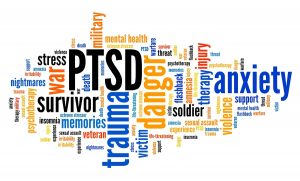EMDR (Eye Movement Desensitization and Reprocessing) is a therapeutic technique that has proven effective in treating a wide range of issues, including PTSD (Post-traumatic Stress Disorder), panic attacks, phobias, dissociative disorders, depression, alcoholism and addictions, and low self-esteem, among others. It helps clients to process both “big T” traumas (caused by such events as war experiences, assaults, and car accidents) and “little t” traumas (caused by anything that takes away from a client’s positive self-image, such as emotional abuse and neglect). Many controlled research studies have proven that it is effective in treating trauma, often in a much shorter period of time than traditional talk therapy.
When someone has a traumatic experience, the memory of that experience is stored improperly in the brain so that, emotionally, it feels like it is still going on. EMDR treatment enables the brain to reprocess the memory so that it is put in its proper context. The client still remembers the incident, but it no longer has the emotional charge it once did. After EMDR reprocessing, the client’s brain fully understands that the memory is in the past; essentially, the memory is put in its file folder in its proper place in the client’s mental filing cabinet.
It is thought that EMDR works like REM (rapid eye movement) sleep in helping people to process distressing memories. It draws on the client’s own capacity for healing. When you get a cut, you don’t need to tell your body how to heal the cut. If there’s dirt in the wound, though, you need to clean it out so that your body can heal itself. EMDR cleans out the wound so your brain is free to heal itself.
While some of my clients come to me for help with “big T” traumas, all of my clients have suffered “little t” traumas. A lifetime of “little t” traumas shapes a person’s understanding of herself and her place in the world.
Many people, through talk therapy or other means, have learned (intellectually, at least) that many of their negative thoughts about themselves are wrong. The problem is that while they might know that those negative thoughts are wrong, they don’t, deep down, truly believe that they are.
EMDR can help you to heal from traumatic experiences. It can help you to connect the dots so that you actually believe all of those positive things you try to tell yourself.
Many of my clients have also benefited from a preverbal EMDR protocol that I use to help heal traumas that happened before the client was able to form conscious memories. That is not something that talk therapy alone is capable of healing.
This may sound too good to be true, but it isn’t. It’s not a magic wand that provides an instant fix. It’s hard work. If you ask my clients, though, they’ll tell you that it’s hard work that is absolutely worth doing!
The original method of doing EMDR, still used by many therapists, involves the therapist moving two fingers back and forth, with the client following the fingers with their eyes. Other forms of back-and-forth motion between one side of the body and the other can work, too, though.
I use one of several methods, depending upon the client and the situation:
- a lightbar. The client follows a light from side to side with their eyes, much as they would follow the therapist’s fingers.
- pulsers (which my clients and I affectionately call “buzzies”), one held in each hand. The pulsers vibrate alternately, which creates the back and forth motion required for EMDR.
- The lightbar and pulsers can be used simultaneously.
- In online sessions, I can have a client use their hands to tap alternately on their knees, with duration and tempo set by me using a metronome. There is also software we can use for the visual version of EMDR.
I am an EMDRIA-certified EMDR therapist. I also offer consultation for EMDR therapists. If you’re interested in EMDR therapy or consultation, please call me at
410-888-0590 or email me at jenniferbeall.lcpc@gmail.com.

